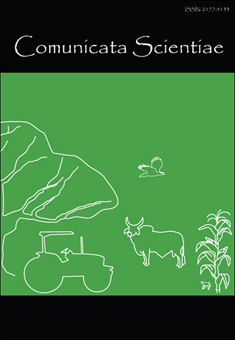Movement of Trigona spinipes (Fabricius) in Mimosa scabrella (Bentham) in function of climatic factors
DOI:
https://doi.org/10.14295/cs.v4i3.415Keywords:
Abelha arapuá, bracatinga, proteção florestal.Abstract
The pest damage to forest trees deserves a significant attention because it can cause severaldamages on wood, twigs, leaves and seeds of many species, so the aim of this study was to recordand characterize, in an unprecedented way as literature, the occurrence of Trigona spinipes, intrees bracatinga (Mimosa scabrella) and relate their incidence with meteorological elements. Thestudy was conducted during the months of September and October 2009, where we evaluated theoccurrence of insect along the branches, trunk and canopy damage action, rhythms of activity,time and favorable conditions for the higher incidence in the plant. The insect attacked 65.8% oftrees in the experimental area and caused a mortality rate of 50%. The period of greatest movementBee was observed between 12:00 and 14:00, under conditions of high average temperature (20.7° C) and solar radiation (2253.96 kJ m²). In an unprecedented manner, records the occurrence ofTrigona spinipes in Mimosa scabrella. Movement of spinipes Trigona is influenced by variation inclimatic factors.Downloads
Download data is not yet available.
Downloads
Published
2013-10-01
How to Cite
Caron, B. O., de Souza, V. Q., Schmidt, D., Behling, A., Eloy, E., & Elli, E. F. (2013). Movement of Trigona spinipes (Fabricius) in Mimosa scabrella (Bentham) in function of climatic factors. Comunicata Scientiae, 4(3), 270–276. https://doi.org/10.14295/cs.v4i3.415
Issue
Section
Original Article
License
All articles published may be reproduced or utilized in any form or by any means whether specified Comunicata Scientiae, author(s), volume, pages and year. The authors are responsible for all the statements and concepts contained in the article.




